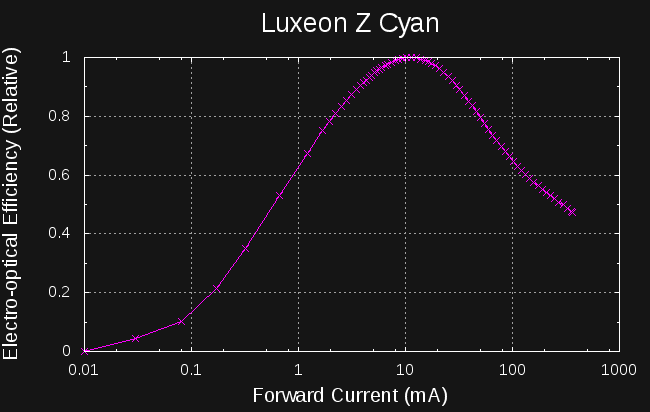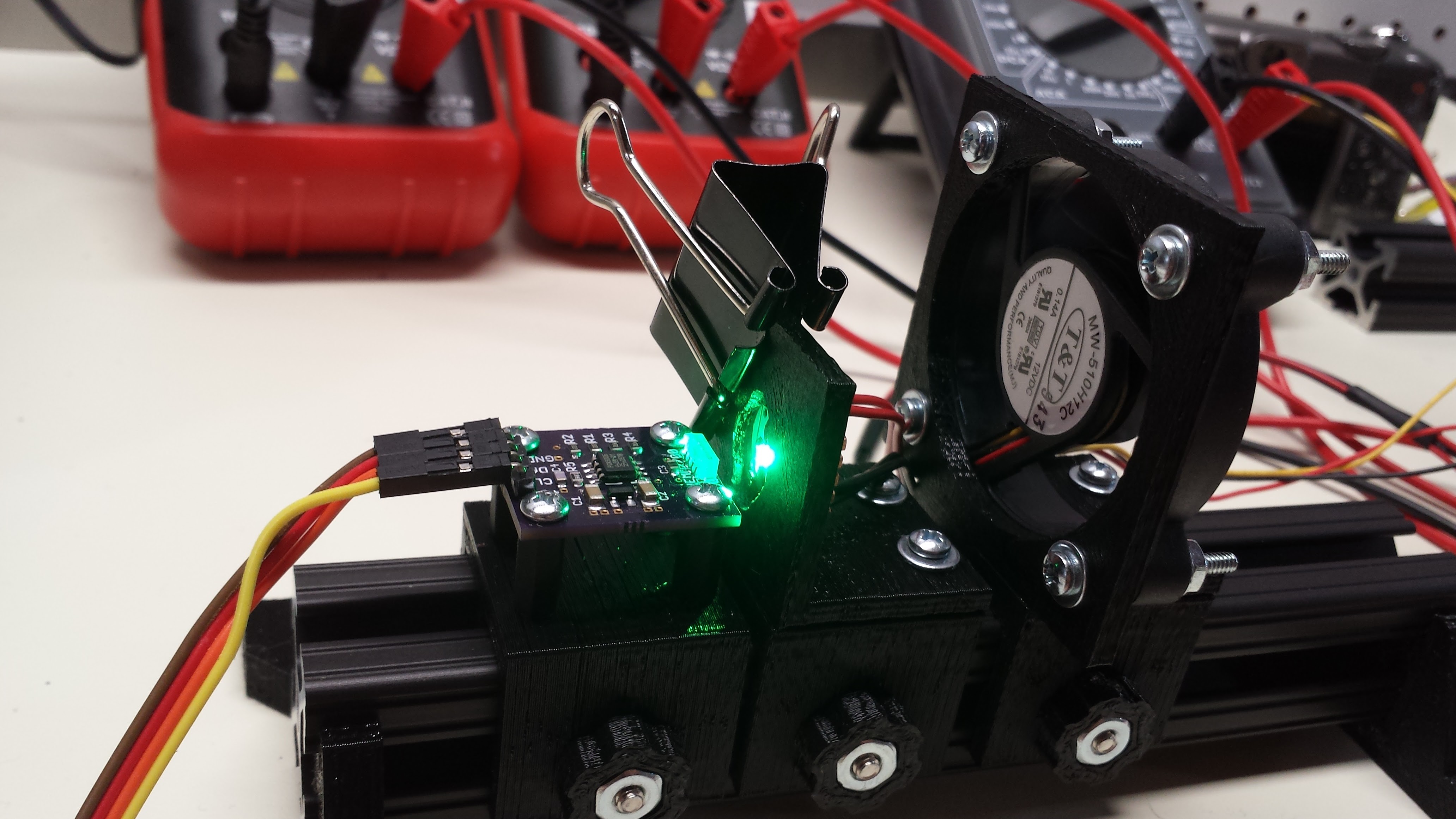Here's the relative efficiency of the cyan Luxeon Z led at various currents. The datasheet shows most parameters for a forward current of 500 mA, and lists 1000 mA as an absolute maximum. I only tested to 350 mA so far, but even here, the LED is operating at less than half of its maximum efficiency. The peak efficiency is right around 10 mA. On the #TritiLED project, where I'm trying to run nighttime LED glow markers for years on lithium coin-cells, this is critical information. And it's not found anywhere on the datasheet.

New Optical Rail Components
I made up a few more printable parts for the optical rail system. What a difference this makes compared to using cardboard, tape, and hot-melt-glue to rig up tests! If the sensor is overpowered by the LED, you can just move it back a few cm, and everything stays aligned.
One of the new brackets has a slot for a Saber Z1 aluminum carrier board. This is a convenient way to test the Luxeon Z LEDs at high current, since the aluminum substrate dissipates much more heat than the vias on my test PCBs. I stuck on a lousy "RAM heatsink" and temporarily clamped the aluminum board in place for measurements. Conveniently, the aluminum boards have two pads each for the anode and cathode connections, so I took advantage and wired it up Kelvin-style.

To keep things cool, I printed a mount for a 50mm fan. It's an unusual thing to see in an optics setup, but really helps in this case. The LED here is operating at the efficiency peak of 10 mA.

Test Boards
My first batch of test boards arrived from OSH Park today. Some of these will have to wait until the next iteration of the analyzer board, but I'll probably learn something from testing a few with the current prototype.

 Ted Yapo
Ted Yapo
Discussions
Become a Hackaday.io Member
Create an account to leave a comment. Already have an account? Log In.
This just yet another reminder that you can't beat actual experiments :-)
Are you sure? yes | no
Yes, and you can't really trust your instincts, either. I was driving this LED at 100 mA, and thought it was probably a little high - maybe the peak would be around 50-75 as a guess based on the few others I had tested - and was already tuning a design toward 50 mA pulses. I never would have guessed 10. Now I have to re-think things.
Are you sure? yes | no